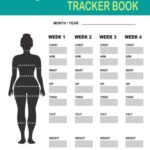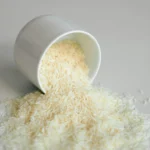Congratulations on your significant weight loss! While you should be proud of your accomplishment, you may have some concerns about the next step: loose skin. It’s only natural to wonder what to expect after shedding those extra pounds. In this article, we will explore the realities of loose skin after significant weight loss and provide you with helpful insights and tips to navigate this aspect of your transformative journey. So, let’s get started on understanding what lies ahead and how to navigate loose skin with ease and confidence.
In This Article
ToggleUnderstanding Loose Skin
Losing a significant amount of weight is an incredible accomplishment, but it can also come with the challenge of loose skin. Many people wonder why loose skin occurs after weight loss and what factors contribute to this condition. Understanding these aspects can help you manage your expectations and develop strategies to address loose skin effectively.
What causes loose skin after weight loss?
Loose skin is primarily caused by the loss of elasticity and collagen in your skin. When you carry excess weight for an extended period, your skin stretches to accommodate the additional volume. However, when you shed those pounds, the skin may not be able to adapt quickly enough, resulting in loose and sagging skin.
Skin elasticity and collagen
Elasticity is the ability of your skin to stretch and then return to its original shape. Collagen, on the other hand, is a protein responsible for maintaining the structure and firmness of your skin. As you age, the production of collagen decreases, making the skin less resilient and more susceptible to sagging.
Factors affecting loose skin
While everyone’s body is different, there are several factors that can influence the extent of loose skin after weight loss. These factors include the amount of weight lost, the speed at which the weight was lost, age, genetics, and your overall skin health. It’s essential to recognize that these factors can vary greatly from person to person, and what works for one individual may not work for another.
Extent of Loose Skin
Now that we understand why loose skin occurs, let’s explore the extent to which you can expect loose skin after significant weight loss. It’s important to note that the amount of loose skin can vary widely depending on individual factors.
How much loose skin can you expect?
The amount of loose skin you may experience depends on various factors, such as the amount of weight lost, your age, and how long you carried excess weight. Generally, individuals who lose a substantial amount of weight, especially over a short period, are more likely to have excess skin. However, even those who lose weight slowly and steadily may still experience some loose skin.
Variances based on individual factors
Individual factors can greatly influence the extent of loose skin. For example, younger individuals tend to have more elastic skin, which may result in less severe loose skin. Genetics can also play a role, as some people naturally have more collagen and skin elasticity than others.
Body parts commonly affected
Certain areas of the body are more prone to loose skin. The arms, abdomen, thighs, and buttocks are commonly affected due to the significant amount of fat accumulated in these regions. However, loose skin can occur in other areas as well, such as the face, neck, and breasts.

This image is property of images.pexels.com.
Timeline for Skin Tightening
After achieving significant weight loss, you may wonder how long it will take for your skin to tighten up. The timeline for skin tightening can vary depending on individual factors and the methods you use to support the process.
Immediate changes after weight loss
Immediately after weight loss, you may notice some initial tightening of the skin as the body adjusts to its new shape. However, this initial tightening is often not sufficient to eliminate all loose skin.
Skin’s natural healing process
The body has the remarkable ability to heal and rejuvenate itself. Over time, your skin will undergo a natural healing process, where collagen production increases and the skin tightens. This process takes time and varies from person to person.
Expected timeline for skin tightening
While it’s difficult to provide an exact timeline, many individuals find that their skin continues to improve gradually over the course of 6-24 months after weight loss. However, it’s essential to keep in mind that this timeline can vary significantly and may be affected by factors such as age, genetics, and overall skin health.
Non-Surgical Options
If you’re looking for ways to address loose skin without undergoing surgical procedures, there are several non-surgical options you can consider. These approaches focus on strengthening the underlying muscles, improving skin health, and promoting overall wellness.
Exercise and muscle building
Strength training exercises can help build muscle and fill out some of the loose skin areas. By targeting specific muscle groups, you can enhance your body’s contours and provide a more defined appearance. Incorporating exercises that target the arms, abdomen, thighs, and buttocks into your routine can significantly improve muscle tone and tighten the skin over time.
Proper hydration and nutrition
Proper hydration is crucial for maintaining healthy skin. When your body is well-hydrated, your skin is more likely to retain its natural elasticity. Additionally, a well-balanced diet rich in vitamins, minerals, and antioxidants can support collagen production and improve skin health. Include plenty of fruits, vegetables, lean protein, and healthy fats to nourish your skin from within.
Skin care routines and products
Implementing a consistent skin care routine can also help improve the appearance of loose skin. Moisturizing daily can keep your skin hydrated and supple. Look for products that contain ingredients like hyaluronic acid, retinol, and peptides, as they have been shown to have positive effects on skin firmness and elasticity. Regular exfoliation can also help remove dead skin cells and stimulate collagen production.

This image is property of images.pexels.com.
Surgical Interventions
For some individuals, surgical interventions may be the most effective option for addressing loose skin. Consulting with a plastic surgeon can provide you with valuable insights and guidance on the available procedures.
Types of surgical procedures available
Various surgical procedures can help remove excess skin and restore a more contoured appearance. These may include body contouring surgeries such as abdominoplasty (tummy tuck), brachioplasty (arm lift), thigh lift, and breast lift. The specific procedure recommended will depend on the areas affected and your desired outcome.
Consulting with a plastic surgeon
Before considering any surgical intervention, it’s crucial to consult with a qualified plastic surgeon. They will evaluate your individual case, discuss your goals, and explain the potential risks and benefits of the procedure. A plastic surgeon can provide an accurate assessment of whether surgery is the right choice for you and guide you through the entire process.
Risks and benefits of surgery
Like any surgical procedure, there are risks associated with surgical interventions for loose skin. These risks can include infection, scarring, bleeding, and unfavorable results. It’s essential to have a thorough understanding of the potential risks and weigh them against the benefits of achieving the desired outcome.
Supportive Garments
Supportive garments, such as compression clothing, can provide temporary relief and support for loose skin. While they do not permanently tighten the skin, they can improve the appearance and provide a smoother silhouette.
Compression clothing and their benefits
Compression clothing works by applying gentle pressure to the skin, which helps support loose tissues and minimize movement. This can create a smoother and more toned appearance, giving you added confidence. Additionally, compression garments can promote blood circulation and reduce swelling, aiding in the skin’s healing process.
Choosing the right garments
When selecting compression clothing, it’s essential to choose the appropriate size and level of compression. Too tight or too loose garments may not provide the desired effects or may lead to discomfort. Consult with a professional or knowledgeable retailer to ensure you select the right garments for your specific needs.
Tips for wearing supportive garments
To maximize the benefits of compression clothing, it’s recommended to wear them consistently and as directed by the manufacturer or healthcare professional. Proper hygiene is crucial, so make sure to wash the garments regularly according to the instructions. Additionally, avoid wearing compression garments that are too constricting or uncomfortable, as they can cause skin irritation.

This image is property of images.pexels.com.
Emotional and Mental Well-being
Dealing with loose skin after weight loss can have both physical and emotional impacts. It’s important to prioritize your emotional and mental well-being during this journey.
Body image concerns
Loose skin can affect your body image and self-confidence, as you may not feel comfortable or satisfied with your new appearance. It’s essential to remember that loose skin is a temporary condition and does not diminish the incredible achievement of weight loss.
Support groups and counseling
Joining support groups or seeking counseling can provide you with a safe and understanding space to share your concerns and seek guidance. Connecting with others who have gone through similar experiences can offer emotional support and practical advice on managing loose skin and body image concerns.
Acceptance and self-love
Learning to accept and love yourself as you are is a crucial aspect of your journey towards overall well-being. While loose skin might not be ideal, it’s important to appreciate your body’s resilience and focus on the progress you have made. Embrace your body’s transformation and celebrate the strength and discipline you have shown throughout your weight loss journey.
Maintaining Healthy Skin
Regardless of whether you choose non-surgical or surgical interventions, maintaining healthy skin is crucial for optimal results.
Exfoliation and moisturizing
Regular exfoliation helps remove dead skin cells and promotes the turnover of new, healthier skin. This can improve the overall appearance and texture of your skin. Additionally, moisturizing daily with a product suitable for your skin type helps keep your skin hydrated and supple, enhancing its resilience.
Incorporating antioxidants into your routine
Antioxidants play a significant role in protecting your skin from damage caused by free radicals. These harmful molecules can contribute to the breakdown of collagen and elastin, leading to loose skin. Incorporating antioxidant-rich foods into your diet and using skincare products containing antioxidants can help combat this damage.
Sun protection for the skin
Exposure to the sun’s harmful UV rays can accelerate skin aging and contribute to the breakdown of collagen and elastin. It’s crucial to protect your skin by applying sunscreen with a high SPF, seeking shade during peak sunlight hours, and wearing protective clothing when necessary. Sun protection is essential, regardless of whether you have loose skin or not.

Realistic Expectations
When dealing with loose skin after weight loss, it’s important to set realistic expectations and acknowledge that every body is unique. Your journey is your own, and what works for someone else may not work for you.
Understanding that every body is unique
There is no one-size-fits-all approach to addressing loose skin. Each individual’s body composition, genetics, and overall health will influence how their skin responds to weight loss. Embrace your uniqueness and focus on what works for you.
Managing expectations and celebrating progress
Managing your expectations is essential to avoid disappointment or frustration. Understand that achieving tight, firm skin may not always be possible without surgical interventions. However, celebrating the progress you have made, both physically and mentally, throughout your weight loss journey is crucial for maintaining motivation and a positive mindset.
Finding happiness and confidence
Rather than solely focusing on the appearance of your skin, strive to find happiness and confidence in all aspects of your life. True beauty comes from within, and embracing your journey, loose skin and all, can lead to a more fulfilled and contented life.
Conclusion
Loose skin should not define your success or overshadow the incredible achievement of significant weight loss. It’s important to appreciate your body’s resilience and the progress you have made. Whether you choose non-surgical options, surgical interventions, or a combination of both, prioritize your overall health and well-being. Celebrate your journey towards a healthier and happier life, and continue to take care of your body with love and respect.
Related posts:
 2 oz (60mL) SBR Nutrition Biotin and Collagen Liquid: Daily Supplement for Hair, Skin, and Nail Health
2 oz (60mL) SBR Nutrition Biotin and Collagen Liquid: Daily Supplement for Hair, Skin, and Nail Health
 Rejuvenate Your Skin with Organika Enhanced Collagen Pure Beauty – Packed with Collagen, Hyaluronic Acid, Vitamin C, Zinc, and Silica – 200g
Rejuvenate Your Skin with Organika Enhanced Collagen Pure Beauty – Packed with Collagen, Hyaluronic Acid, Vitamin C, Zinc, and Silica – 200g
 Sweat-Inducing Skin Tightening Cream by Solace Labs | Targets Stomach Fat and Cellulite | Ideal for Pre and Post Workout Massage | Long Lasting Formula
Sweat-Inducing Skin Tightening Cream by Solace Labs | Targets Stomach Fat and Cellulite | Ideal for Pre and Post Workout Massage | Long Lasting Formula
 Extreme Weight Loss Pills for Men and Women: Hydroxycut Hardcore Elite – Maximum Strength Weight Loss Supplement with Energy Boost and Metabolism Booster – 110 Capsules offered in various package sizes
Extreme Weight Loss Pills for Men and Women: Hydroxycut Hardcore Elite – Maximum Strength Weight Loss Supplement with Energy Boost and Metabolism Booster – 110 Capsules offered in various package sizes
 Body Measurement Journal for Women: A Comprehensive Tracker for Weight Loss and Fitness Goals – 110 Pages, 8.5″ X 11″ InchEmptyEntries, Weight Loss Progress Diary, Exercise Log, and Meal Planner – Perfect for Girls and Women
Body Measurement Journal for Women: A Comprehensive Tracker for Weight Loss and Fitness Goals – 110 Pages, 8.5″ X 11″ InchEmptyEntries, Weight Loss Progress Diary, Exercise Log, and Meal Planner – Perfect for Girls and Women
 Adjustable Magnetic Weighted Bracelet for Lymphatic Drainage and Weight Loss, Hematite Therapy Bracelet for Men and Women, Reduce Swelling and Promote Weight Loss
Adjustable Magnetic Weighted Bracelet for Lymphatic Drainage and Weight Loss, Hematite Therapy Bracelet for Men and Women, Reduce Swelling and Promote Weight Loss











No comment yet, add your voice below!